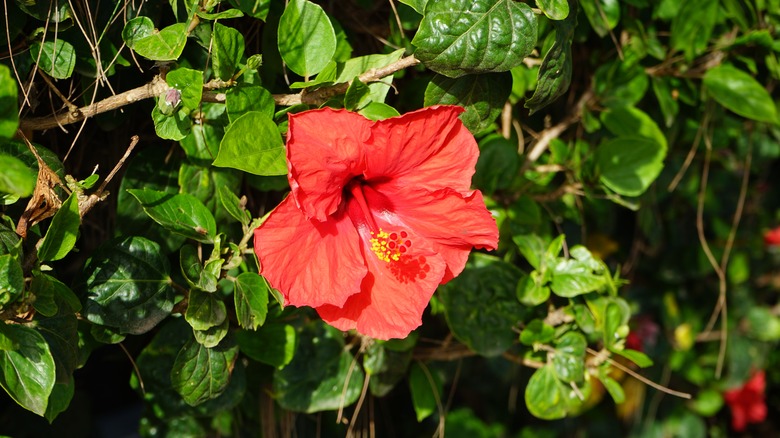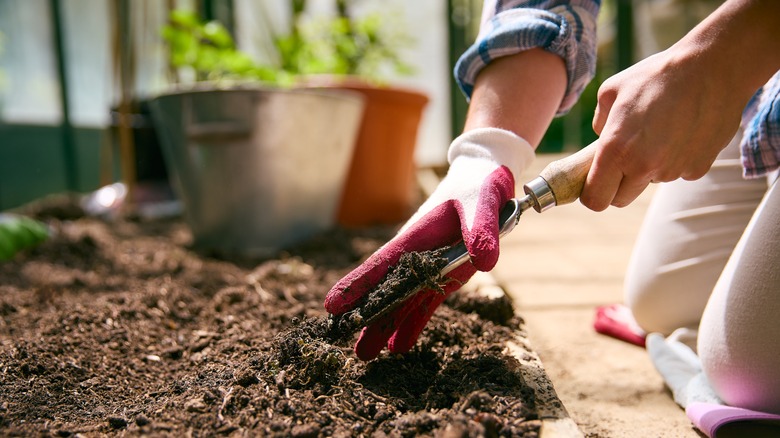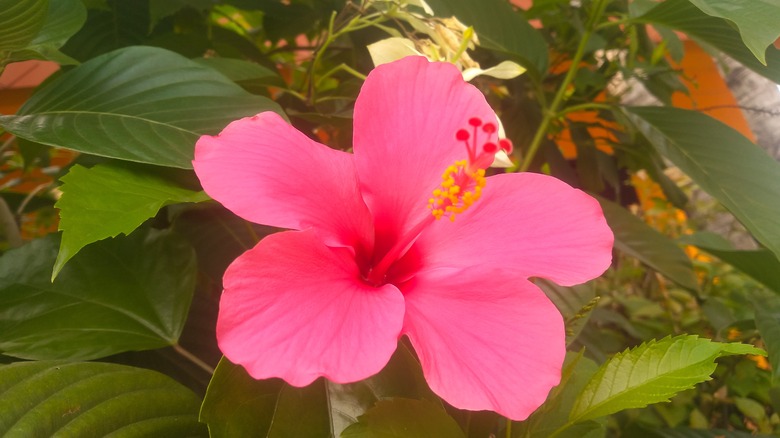Grow A Gorgeous Hibiscus Garden By Saving Your Seeds. Here's How
Hibiscus plants (Hibiscus rosa-sinensi) are a stunning addition to any garden. Their lush greenery is decorated with colorful flowers that bloom from August to October. If you already own at least one of these plants, you can grow an entire hibiscus garden by harvesting their seeds to replant them. Tiffany Selvey, House Digest's master gardener, shared the details on exactly how to do this. "You can leave a few spent blooms on the plant throughout the season and harvest the seeds when the heads have dried and begin to crack open," she shared while speaking exclusively to House Digest. "Another option is to wait until the end of the season and collect all the seeds left from the last blooms. The key to collecting viable seeds is letting them dry full on the plant before harvesting them for storage."
You might be in the habit of deadheading hibiscus if you have experience growing the plant. However, Selvey explained this can interfere with seed harvesting, given the fact that you should not get rid of those blooms before the seeds reach the end stages of development. Rather than going this route, consider following Selvey's advice to collect the seeds successfully. Once you have planted them, you can look forward to having your very own gorgeous hibiscus garden right at home.
How to plant your hibiscus seeds
To plant hibiscus seeds and grow your own flowers, you will need to identify the specific species you are working with first. "The success you'll have growing hibiscus plants from seed depends a lot on the cultivars," Selvey explained while speaking exclusively to House Digest. With over 200 species of hibiscus available around the world, there's no one perfect answer for all of them." As you may have guessed, native species will give you the least trouble. "Native varieties are certainly the easiest to grow and will often self-seed," the expert continued. "When that happens, you can just dig up the sprouts in the spring and place them where you want. These species generally don't have any specific soil demands, but adding a little compost to the soil around the transplant never hurts."
Selvey went on to share that cultivated species sometimes contain sterile seeds. These should not be harvested because they cannot reproduce. If you have trouble identifying the exact species of hibiscus plant you have on hand, you may need to get a bit experimental. Selvey suggested planting these seeds ¼ inches into soil in a planter and seeing whether they grow. If they do, this may make it easier for you to identify the exact hibiscus species.
Planting and growing conditions for your hibiscus seeds
Selvey went on to share more about the optimal planting and growing conditions for hibiscus seeds. "If they do sprout, you'll get the best blooms from plants in full sun, so select a location that gets at least six hours of sunlight a day and drains well," she explained while speaking exclusively to House Digest. "Dig a hole twice as wide as the root ball, add your plant, and backfill the space with a mix of soil and compost." After you have finished this process, be sure to water the plants thoroughly. You will need to repeat this after the soil dries out one inch below its surface.
In addition to understanding the proper growing conditions for hibiscus, it is also important to know what disadvantages come along with growing the plant. Luckily, Selvey shared details on this as well. "The rose of Sharon hibiscus (Hibiscus syriacus) is invasive in some areas, so check locally to make sure you are not planting a species that will quickly take over everything," she explained. "Other native, self-seeding varieties can also reproduce quickly, so have a plan in place to control extra sprouts if they pop up." Although you might be tempted to simply opt for your favorite color hibiscus flower variety, you need to put a bit more thought into the type you select.


